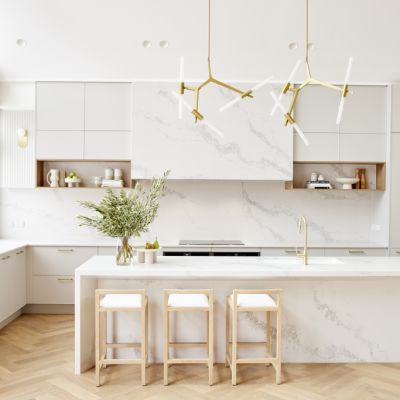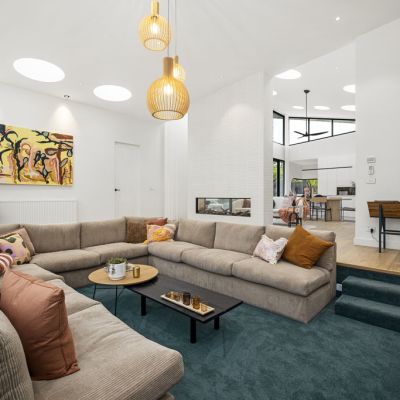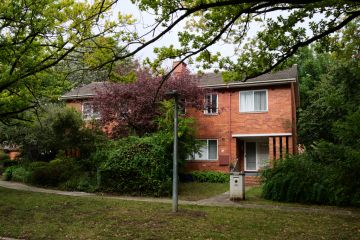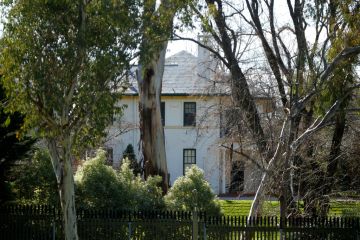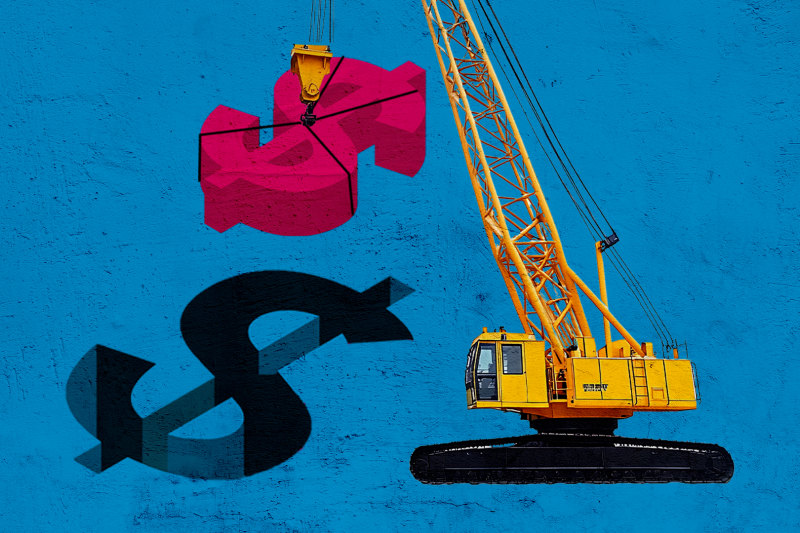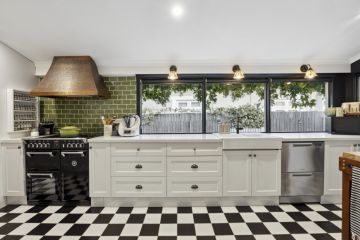The Block 2021: Five questions to come out of the auctions
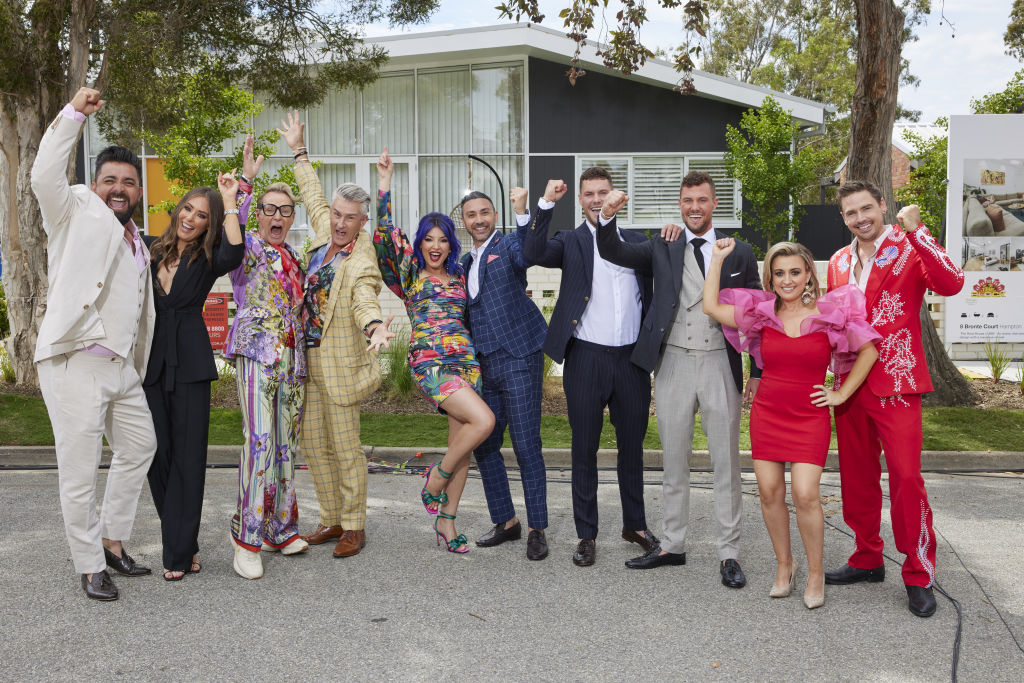
There was plenty of action at this year’s auctions: quirky bids, nervous starts and unexpected results.
Let’s look more closely at some important factors that might have shaped the results.
Did the Fans teams redeem themselves?

Mitch Edwards and Mark McKie, and Ronnie and Georgia Caceres were pitted against three new couples on this year’s Hampton season, Fans v Faves.
Both returning fan favourite couples benefitted handsomely – the Caceres pocketed $296,000, and Mr Edwards and Mr McKie won the series with a total prize purse of $744,444.44.
Despite the size of Caceres’ winnings, the sum placed them last of the five teams this year, raking in the smallest amount over reserve at auction.
They endured a stressful auction in 2017 when they debuted on the Elsternwick season of the show. Their property failed to sell under the hammer, but a buyer later emerged, providing the couple with a profit of $161,000.
Their popularity with the audience that year compelled Nine to sign the Perth-based parents, who launched their own renovation and design advice show, Quick Room Flips with Ronnie and Georgia.
Mr Edwards and Mr McKie’s relationship with The Block began as contestants on The Oslo season, filmed in St Kilda in 2019.
Their house, which was part of a chic overhaul of a derelict and seedy former backpackers’ hostel, was the most viewed listing online, but at auction, they won the least amount of money, taking home $384,000.
How can the reserves be so high?

Each of the properties had a reserve price – the minimum amount a seller will accept for the property – that is higher than the price guide given to interested buyers.
Houses 1, 2 and 3 had publicly advertised price guides of $2.8 million to $3 million, but each had a reserve of $3.4 million.
House 4 was listed with a price guide of $2.6 million to $2.8 million and also had a reserve of $3.4 million.
House 5, on by far the largest block of land on the show, had a price guide of $3.6 million to $3.8 million and a reserve of $4.1 million.
It is not uncommon in Melbourne’s real estate market for vendors to set a reserve higher than the price guide provided to buyers, and there is no law requiring a reserve to match the price guide. It is a situation that can leave underbidders confused.
It is also not evidence of underquoting for a reserve to be set higher than a price guide or for a property to sell well above its reserve due to unexpectedly strong interest on auction day.
Underquoting is very hard to prove. By definition, it can occur when a property is advertised at a price that is less than the estimated selling price, is less than the seller’s asking price, or has already been rejected by the seller.
This means a selling agent and vendor can discuss their reserve price only on the morning of an auction after receiving buyer feedback through the campaign and set it at a level that may be different to the price guide.
“We got given the reserve literally one minute before the auction,” said Ray White’s Kevin Chokshi, selling agent for House 4.
“It’s obviously all decided by Channel Nine, so we got given a price guide by Channel Nine and then we got given a reserve by Channel Nine, and we just followed instructions.
“We did increase our statement of information 24 hours prior to $2.8 million to $3 million.”
The Agency’s Jesse Raeburn, selling agent for House 3, pointed to the timing of the auctions after Melbourne emerged from lockdown.
“We base our estimated selling range on the best comparable sales at the time,” he said.
“We do our statement of information almost three months before the actual property goes to auction, and we had to pretty much do these during lockdown. There weren’t a lot of comparable sales.
“That shows the strength of the Melbourne property market. What we valued these properties at three months ago was no longer relevant because [the market] has increased so much.”
Consumer Affairs attended this year’s Block auctions, as they do each year.
Did the auction order matter?
According to one buyers’ agent, it did. But the auctioneer of the first property under the hammer said it was a “damned if you do, damned if you don’t” scenario.
The properties were coincidentally auctioned in the order they were numbered on the show – the Caceres’ kicked it off with House 1, followed by Mr Edwards’ and Mr McKie’s House 2, then Tanya and Vito Guccione’s House 3, Luke and Josh Packham’s House 4, and House 5, renovated by Kirsty Akers and Jesse Anderson, was last.
The Caceres’ auctioneer David Wood of Belle Property said of being the first house to go under the bright lights of the televised auctions: “You are damned if you do, damned if you don’t”.
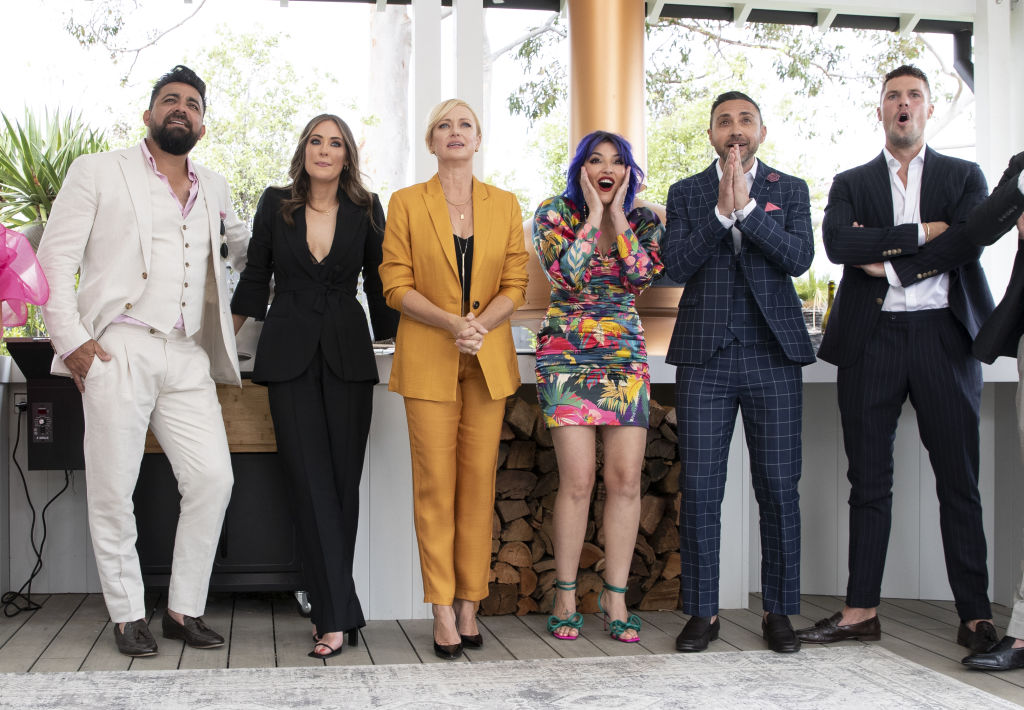
“Ultimately, the market decides the worth of the house,” Mr Wood said, explaining that the corner position – closest of the five to busier Thomas Street – and having the smallest parcel of land slightly compromised the overall offering, according to buyer feedback during the marketing campaign.
“It has enormous appeal in its style and layout,” Mr Wood said, adding the home theatre and the cellar were elements that drew five bidders to fight for the keys.
Wood said that if the Cecares’ did not go first, and the auctions before them failed to “rip”, they risked going under the hammer without any momentum.
Buyer’s advocate Frank Valentic of Advantage Property Consulting said there were “shock results” on the day and that the Cecares’ and Ms Akers and Mr Anderson’s houses sold for less than he expected.
“I think the order crucified Ronnie and Georgia and Kirsty and Jesse,” Mr Valentic said, adding it was preferable not to go first or last.
“Ronnie and Georgia should never have gone first; they should have gone second.
“People are still feeling themselves out. You don’t want to pay $3.6 million for their one and all the others sell for $3.1 million, and you look like you’ve got egg on your face.”
Where do the houses sit in the auction market?
Once regarded as the bridesmaid suburb to flash neighbour Brighton, but now a drawcard postcode in its own right, bayside Hampton’s median house price has rocketed 28.5 per cent in five years.
The inner-south suburb’s median house price leapt 11.1 per cent in the past 12 months to $2.095 million.
The record house price in Hampton is $8.18 million paid in August this year for 31 Gordon Street. The five-bedroom house on 1855 square metres of land has a grand, horseshoe-shaped driveway.
This year, the Block’s largest parcel of land was House 5 (renovated by Ms Akers and Mr Anderson) on 911 square metres.
Whitefox Advocacy’s Nicole Jacobs said the typical price per square metre in Hampton was $5000 to $10,000. She estimated the land was worth $3400 a square metre for The Block properties, plus $1.5 million for the renovated and fully-furnished houses.
No matter the season, the results always include an intangible factor – the premium that buyers are willing to pay for the thrill of purchasing a famous Block house.
Who bought The Block houses this year?
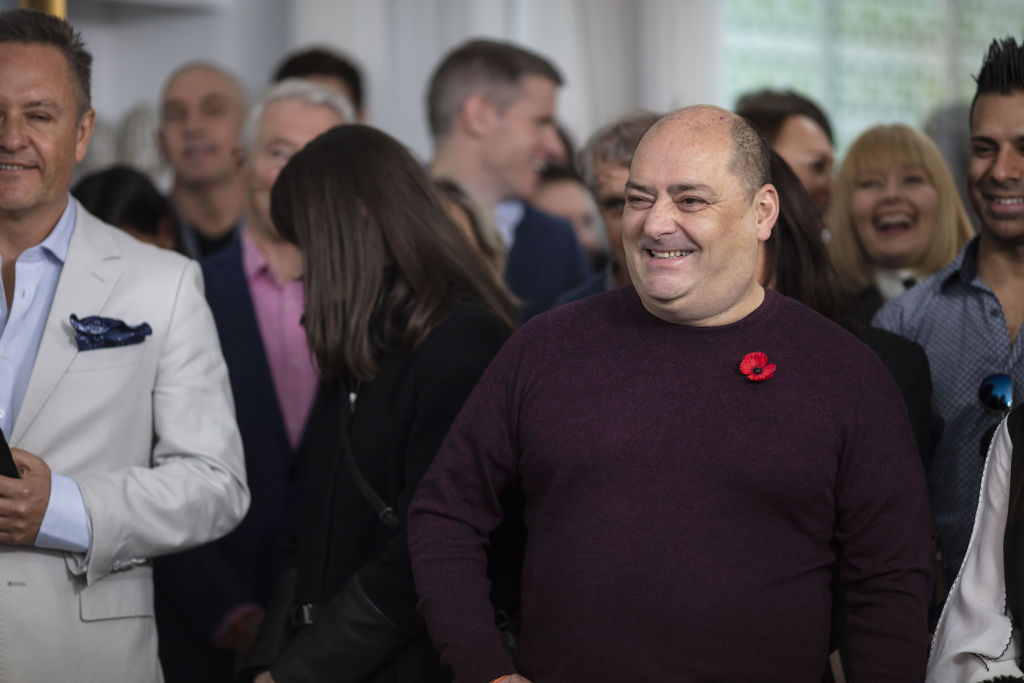
Investors reigned supreme.
An anonymous investor won the keys to the Caceres’ property (House 1). The low-key buyer was represented at the auction by advocate Andrew Date of agency Industry Insider.
Buyers’ advocate Frank Valentic – a familiar face to viewers of The Block as a bidder for houses and apartments on previous seasons – inked the contract to the Packham twins’ property (House 4) for a Sydney-based investor. Mr Valentic said his client plans to move into the new purchase on Bronte Court eventually.
Tech entrepreneur Danny Wallis, who has become a collector of Block properties, bought three this year: Mr Edwards’ and Mr McKie’s (House 2), Tanya and Vito Guccione’s (House 3), and Ms Akers’ and Mr Anderson’s (House 5).
The auction results were:
- House 1, Ronnie and Georgia: Sold for $3,696,000, reserve $3.4 million, profit $296,000
- House 2, Mitch and Mark: Sold for $4,044,444.44, reserve $3.4 million, profit $644,444.44 + $100,000 winner’s prize = grand total $744,444.44
- House 3, Tanya and Vito: Sold for $3,800,000.01, reserve $3.4 million, profit $400,000.01
- House 4, Luke and Josh: Sold for $3,930,000, reserve $3.4 million, profit $530,000
- House 5, Kirsty and Jesse: Sold for $4,401,523.67, reserve $4.1 million, profit $301,523.67
The Block airs on Nine, a majority owner of Domain.
We recommend
We thought you might like
States
Capital Cities
Capital Cities - Rentals
Popular Areas
Allhomes
More

